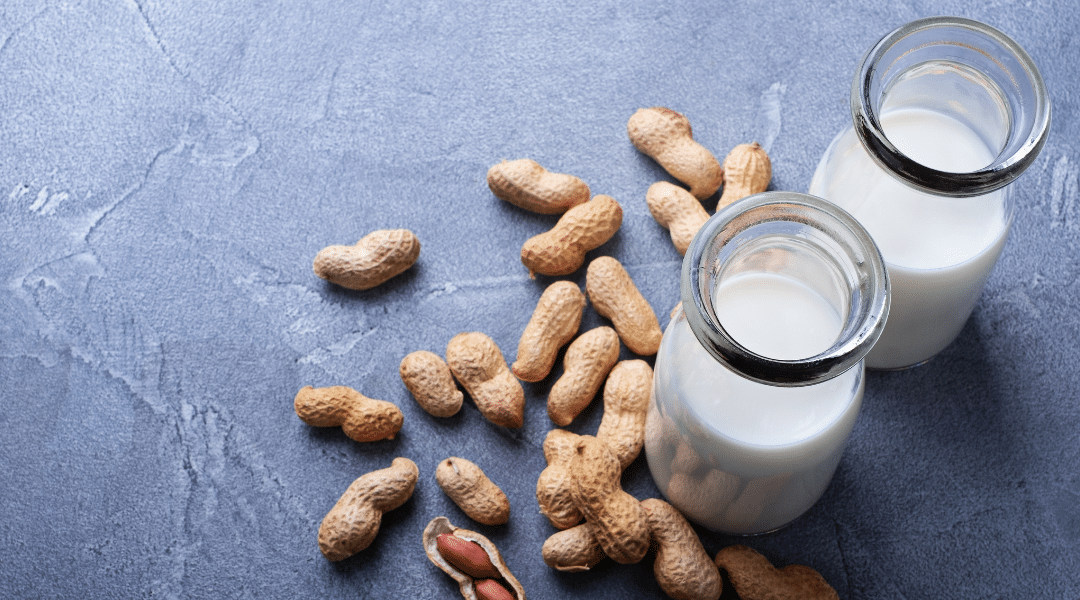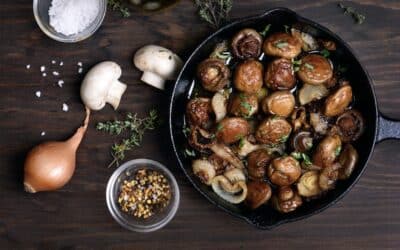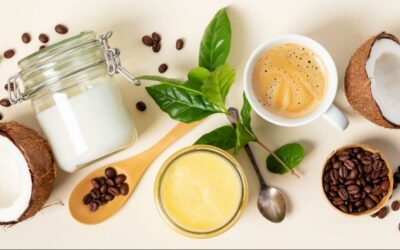Why do we feel sore after a workout? Inflammation. Acute inflammation is a natural response to an effective workout, and feeling a bit sore can be a sign that your body is healing itself. This temporary inflammation is nothing to worry about, and eating an abundance of inflammation-fighting foods can help with this. Chronic inflammation, however, can get you into trouble. Multiple components of dairy—such as trans fat and the foreign sugar Neu5gc—trigger an inflammatory response. Over time (say, a serving of chocolate cow’s milk after every workout), this response can put your body in a chronic inflammatory state—putting it at risk for serious diseases.
A simple way to reduce your risk of chronic inflammation is to ditch dairy. To address acute inflammation and speed up your workout recovery process, eliminate dairy, then consider a few other proactive measures. While food alone shouldn’t replace your solid recovery routine (rest, foam rolling, ice baths, etcetera), incorporating these plant-based, inflammation-fighting foods may significantly speed up your recovery time and get you back in action. (2)
6 Inflammation-Fighting Foods
1. Select Spices
Many common spices have anti-inflammatory properties, but ginger and turmeric are inflammation-fighting powerhouses, and it doesn’t take much. Sprinkle them into tofu or chickpea scrambles, soups, and roasted veggies, or add a tiny pinch of each to your smoothies.
2. Dark Leafy Greens
Kale, collards, spinach—most leafy greens are terrific inflammation-fighting foods. Massage your kale and let it sit for a few hours in a delicious tahini dressing for a tender kale salad, cook down collard greens with garlic and onions, or toss a few handfuls of fresh or frozen spinach into a stir-fry.
3. Select Fruits
Think strawberries, blueberries, oranges, and cherries. Enjoy these fruits on their own, in a smoothie, or blended with frozen bananas for a sweet dairy-free frozen yogurt-like dessert.
4. Nuts
Stock up on walnuts, almonds, and hazelnuts. Slightly roast them and make your own nut butter (or purchase a store-bought variety). Nuts also round out salads and add texture to amazing acai bowls.
5. Tomatoes
Think you don’t like tomatoes? Try a different variety. From cherry to Roma to heirloom, tomatoes come in all tastes and textures. Use them to top a dairy-free veggie pizza; make a plant-based bolognese sauce; or whip up this incredible dairy-free tomato, cucumber, and tofu feta salad.
6. Beans
Pinto, garbanzo, black, or kidney—there are literally dozens of different bean varieties to suit any preference. Whether you purchase them in a can or make your own from dried, beans still retain their inflammation-fighting properties. Simmer a hearty bean chili; wrap up a spicy bean and vegetable burrito; or make a dip to dunk raw veggies or schmear onto sandwiches and wraps.
What do these foods have in common? Antioxidants! Antioxidants are compounds that aid in both the prevention and repair of cell and tissue damage—often caused by inflammation. (2) While dairy is exceedingly low in antioxidants, plant-based foods tend to be extremely high in these compounds.
The fuel we choose to put into our bodies makes a difference not only in our athletic performance but in our overall lives. Try it for one week. Ditch dairy (if you haven’t already), incorporate these inflammation-fighting foods into your diet and take stock of how you feel. Inflammation doesn’t have to be an inevitable burden you must learn to cope with—a simple thing such as eating a spinach salad with walnuts and chickpeas can make all the difference.
To learn more about inflammation-fighting foods and receive our best tips from pro athletes, sign up below!
Power Meals with Inflammation-Fighting Foods
Breakfast
Option 1: Smoothie made with frozen berries, a handful of spinach or kale, ½ inch slice of fresh ginger, pinch of turmeric, frozen banana, 1-2 tablespoons of nut butter, and a splash of plant milk.
Option 2: Oatmeal (stovetop or overnight) made with plant milk, a dash of cinnamon and turmeric, a drizzle of maple syrup, blueberries, and almond butter swirled on top.
Lunch
Option 1: Large kale salad tossed in tahini dressing mixed with shredded carrots, baked crispy chickpeas, cherry tomatoes, diced onion, and sliced avocado or a small handful of walnuts.
Option 2: Bowl of African peanut stew made with coconut milk, vegetable broth, peanut butter, spinach, tomatoes, chickpeas, and warming spices. Enjoy with a side of fruit such as strawberries or an orange.
Dinner
Option 1: Vegetable and bean burrito stuffed with pinto or black beans; seasoned and sautéed zucchini, spinach, mushrooms, and bell peppers; pico de gallo; and cashew-based crema sauce. Option to add homemade or store-bought walnut chorizo for additional fat and protein.
Option 2: Breakfast-for-dinner chickpea scramble with kale or spinach, mushrooms, tomatoes, onions, and carrots seasoned with garlic, cumin, black pepper, and turmeric. Serve with a side of homestyle sweet potatoes and a bowl of berries.
References
1.https://www.health.harvard.edu/staying-healthy/foods-that-fight-inflammation








